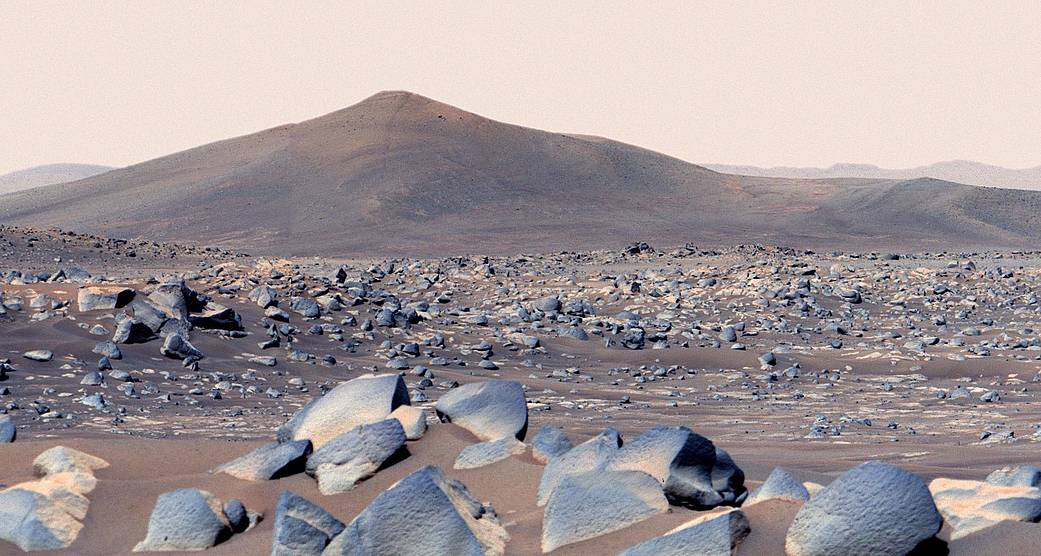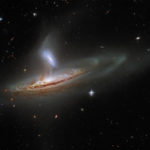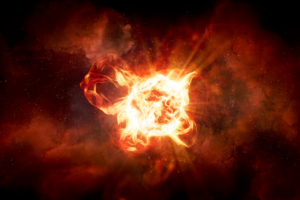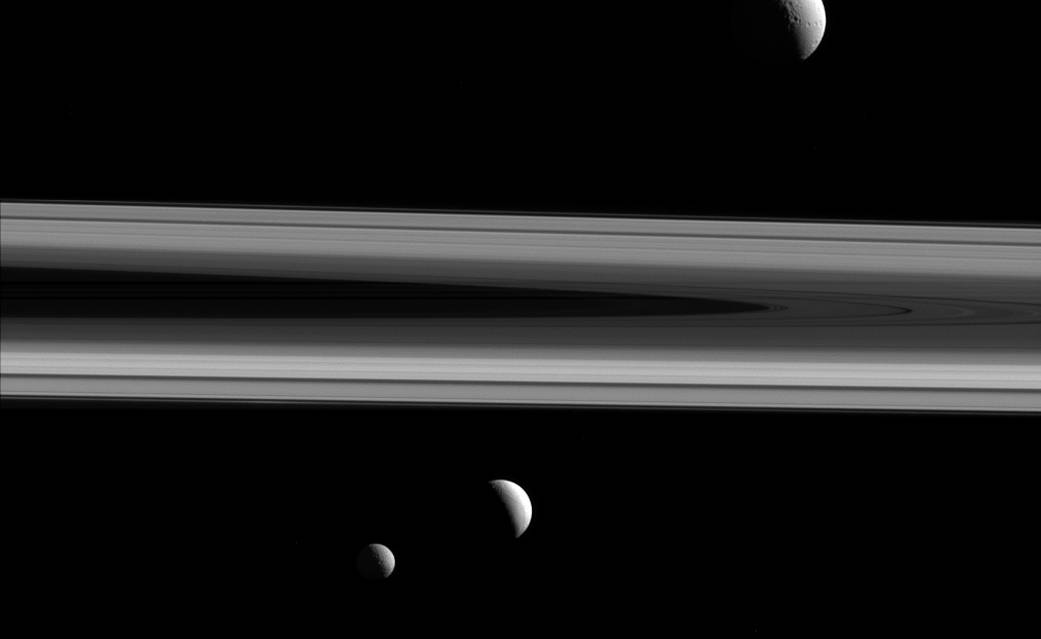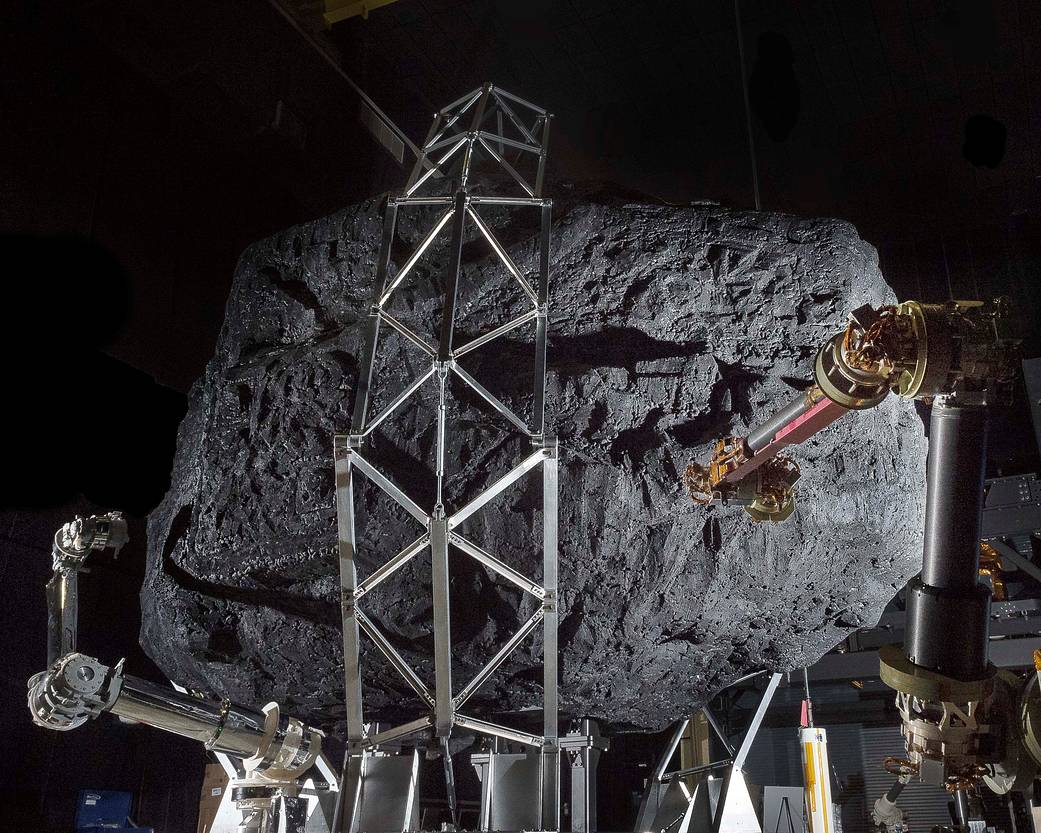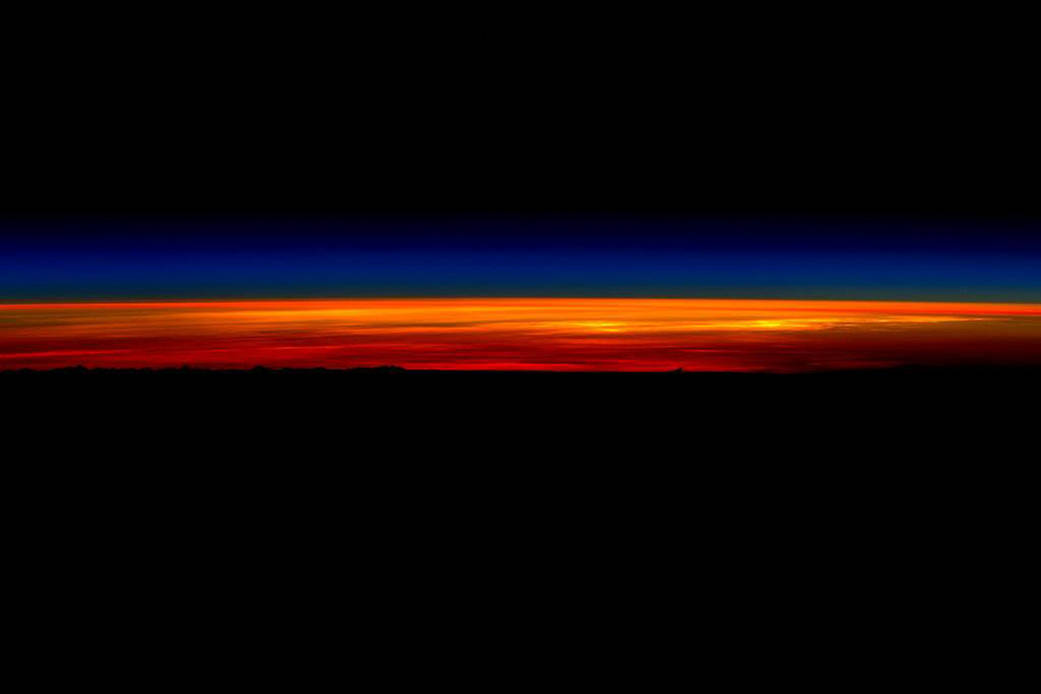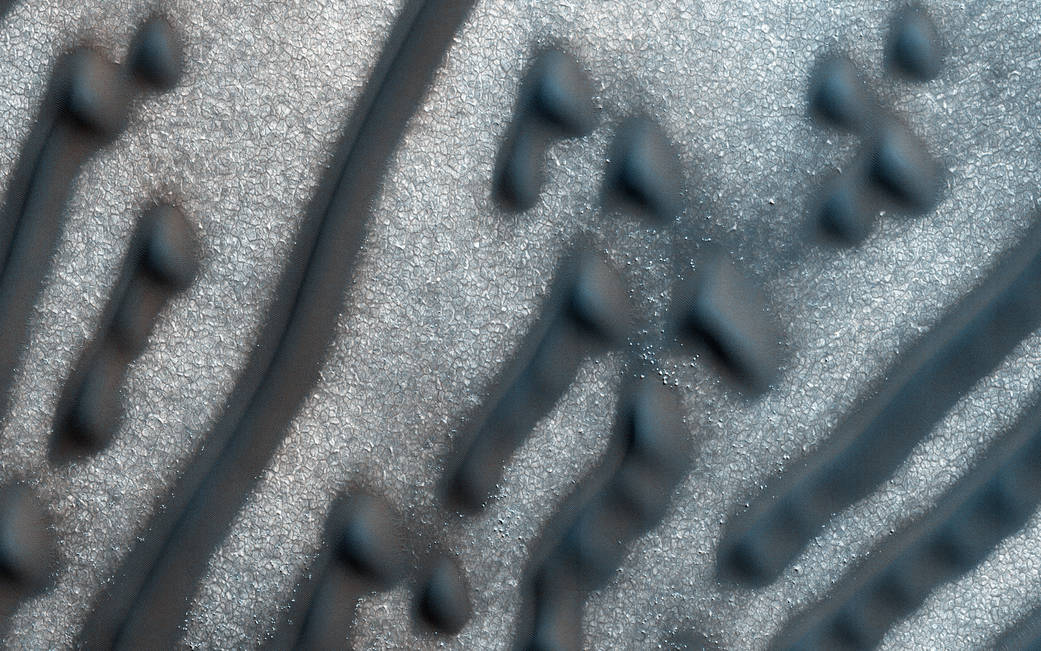NASAの今日の1枚は、火星地表で探査活動をしてるローバーにより撮影された画像です。
手前の岩を「カエル岩」と名付けたということです。
でも皆さん、これ、カエルに見えますでしょうか?
サンタクルスと名付けられたこの丘の景観は浸食によるものだとNASAは伝えています。
NASAの公式サイトのURLはこちら:
A View of the Red Planet (in Blue) | NASA
以下は記事原文と和訳です。
A View of the Red Planet (in Blue)
NASA’s Perseverance Mars rover snapped this view of a hill in Mars’ Jezero Crater called “Santa Cruz” on April 29, 2021, the 68th Martian day, or sol, of the mission. About 20 inches (50 centimeters) across on average, the boulders in the foreground are among the type of rocks the rover team has named “Ch’al” (the Navajo term for “frog” and pronounced “chesh”).
NASAの火星探査車パーシビアランスが、2021年4月29日、火星のミッション68日目に「サンタクルス」と呼ばれる火星のジェゼロクレーターの丘の撮影をしたのがこの画像です。手前に写っている平均して直径約20インチ(50センチメートル)の岩は、探査チームが「チャル」(ナバホ語で「カエル」を意味し、「チェシュ」と発音)と名付けたものです。
Composed of multiple images, this enhanced-color mosaic was created using the left- and right-eye views of Perseverance’s Mastcam-Z camera system, merging the scene into a single, wider view. Santa Cruz hill is a possible eroded remnant of Jezero Crater’s western delta. The hill is about 164 feet (50 meters) tall and was roughly 1.6 miles (2.5 kilometers) east of the rover when the photo was taken, viewed from “Van Zyl Overlook.”
パーシビアランスに搭載されたMastcam-Zカメラシステムの左右のビューにより作成した複数のモザイク画像から、1枚の幅広いビューをもつ画像に構成しています。サンタクルスの丘は、ジェゼロクレーターの西部デルタの浸食された痕跡である可能性があります。丘の高さは約164フィート(50メートル)で、撮影時のローバーは、東方へ約1.6マイル(2.5キロメートル)にある「ヴァンジルオーバールック」から見ています。
A key objective for Perseverance’s mission on Mars is astrobiology, including the search for signs of ancient microbial life. The rover will characterize the planet’s geology and past climate, pave the way for human exploration of the Red Planet, and be the first mission to collect and cache Martian rock and regolith (broken rock and dust).
火星におけるパーシビアランスの主な探査目的は、古代の微生物の生命の痕跡を見つけ出すことを含む宇宙生物学です。ローバーは、火星の地質と過去の気候環境を探り、人類による火星探査への道を開き、火星の岩とレゴリス(壊れた岩とほこり)を収集する最初のミッションになります。
Subsequent NASA missions, in cooperation with ESA (European Space Agency), would send spacecraft to Mars to collect these sealed samples from the surface and return them to Earth for in-depth analysis.
Image Credit: NASA/JPL-Caltech/ASU/MSSS
Last Updated: Mar 3, 2022
Editor: Yvette Smith
